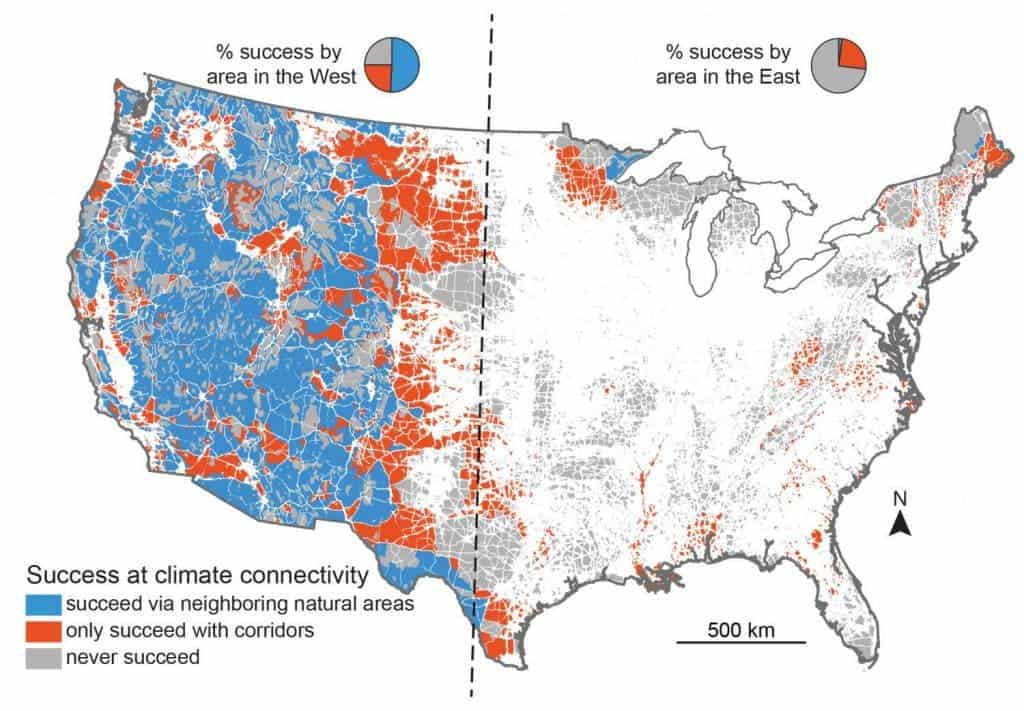Rising temperatures are forcing plants and animals to fight an uphill battle, but in most places there’s nowhere one else to run. About 50 percent of the Western U.S. offers the necessary conditions for species to migrate in and out of areas where they’re vulnerable, but this happens in only 2 percent of the Eastern U.S. Trapped, many of these species will be doomed unless the federal government musters a plan to open so-called ‘climate corridors’ — swaths of undisturbed land and waterways that fauna can use to create a migratory network.

The findings were reported in the journal Proceedings of the National Academy of Sciences by researchers at the School of Biology at the Georgia Institute of Technology and collaborators elsewhere. The team says that corridors up to 62 miles long could help connect 25 percent more habitats or 65 percent nationwide.
The greatest gains or return of investment could be felt east of the Mississippi where massive industrialization, urbanism and other human activities have isolated many habitats. In this Eastern part of the United States, only 2 percent of habitats are connected well enough to ensure their survival in the face of mounting climate change.
“Species are going to have to move in response to climate change, and we can act to both facilitate movement and create an environment that will prevent loss of biodiversity without a lot of pain to ourselves,” said Jenny McGuire, a research scientist in the School of Biology at the Georgia Institute of Technology. “If we really start to be strategic about planning to prevent biodiversity loss, we can help species adjust effectively to climate change.”
“A lot of these land areas are very fragmented and broken up,” McGuire added. “We studied what could happen if we were to provide additional connectivity that would allow species to move across the landscape through climate corridors. We asked how far they could actually go and what would be the coolest temperatures they could find.”
These corridors aren’t literally paved routes. Instead, it’s more of a matter of leaving nature undisturbed in key areas which might join two or more habitats. This could mean helping forests extend their reach, managing rivers, planting habitats adjacents to interruptions (human farms) and limiting human activities in the identified routes.

Species with a smaller range, like amphibians, or special dietary needs will struggle the most, McGuire says. “The Southeast ends up being a really important area for a lot of vertebrate species that we know are going to have to move into the Appalachian area and even potentially farther north,” she added.
And another thing. All of these models were made keeping in mind a global warming scenario where emissions are actually significantly reduced compared to business as usual, i.e. what happens today and is forecasted for the future. In a business as usual scenario, orange areas of the map — which highlight those areas where species could survive only if there’s a corridor to escape — are as good as gone. There’s nothing we could do if the continental U.S. warms by a few more degrees Celsius in these red hot spots.
“We see a lot of species’ distributions really start to wink out after about 50 years, but it is tricky to look at future predictions because we will have a lot of habitat loss predicted using our models,” McGuire said. “Change is perpetual, but we are going to have to scramble to prepare for this.”






